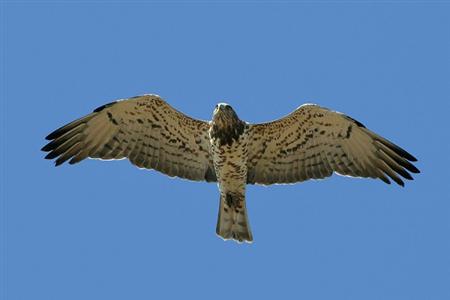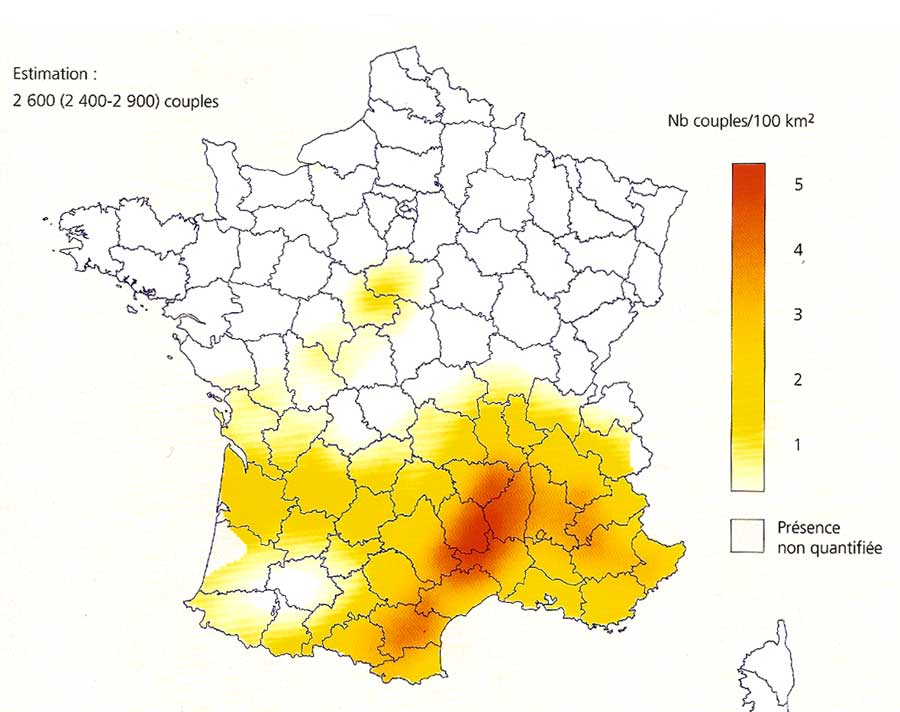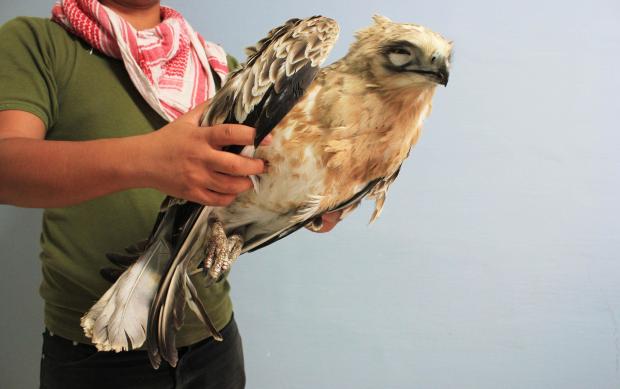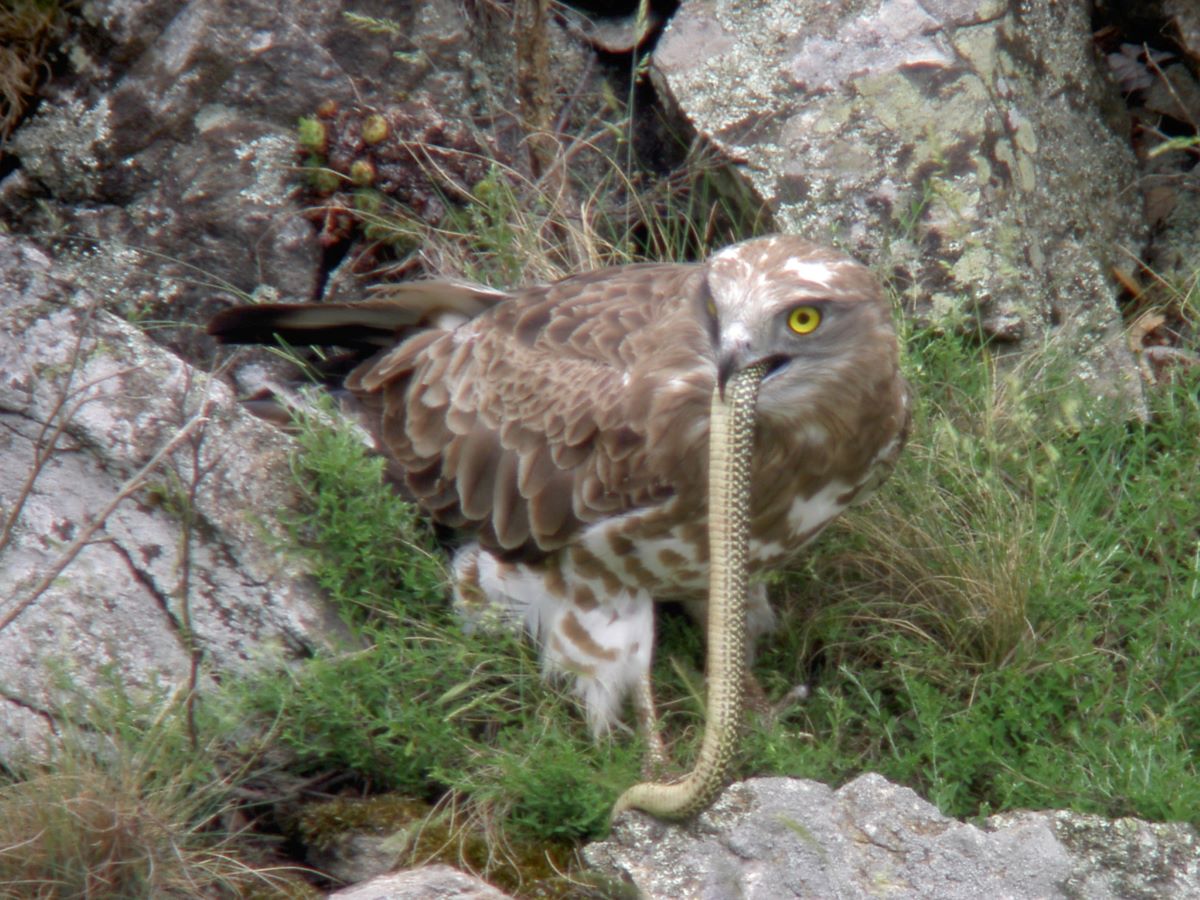Short toed eagle

Short
toed eagle
Due to a dependence on snakes as a primary food
source the Short toed eagle is restricted to the southern and eastern
regions of
They also occur in other
countries along the
All of these are migratory summer visitors although there is a sedentary population on the Indian Subcontinent. There are no subspecies and the closest relatives are the Beaudouin's Snake Eagle Circaetus beaudouini and the Black-breasted Snake Eagle Circaetus pectoralis, both are African species that were once considered to be subspecies of the Short-toed Eagle, but are now considered to be completely different species.
Short toed eagle nests are invariably constructed high in tall tree in a secluded area,, (rarely a cliff ledge may be used). The nest, which is made from twigs about the width of pencils and lined with green leaves or pine needles, is relatively small and light for a bird of this size. These small nests are almost invisible from the ground, as they are carefully hidden at the top of the tree in a branch junction facing south / southwest and away from the wind. Their height varies from 6 to 30 meters and the same nest will be restored and used year after year.
The female lays one plain white egg which is incubated for 45-47 days and after hatching, the young eagle stays in the nest for 60-80 days where it is feed with pieces of snake that are provided to the female by the male. As with many raptors the male is not allowed near the chick although he will remain in close proximity to the nest when not hunting. Only after two months and with enormous effort is the young eagle able to swallow larger snakes without assistance.
The young eagle finally leaves the nest at around 70 days when it learns to hunt with the male whilst also being provided with food by both parents. For a brief period in August and September all three birds can be seen flying, soaring and playing together before they begin their journey to West Africa. Here the juvenile eagles tend spend the first few years of their lives before one spring they make the journey north to seek a mate.
As a fully migratory species they arrive here in
Short toed eagles mainly hunt by soaring, frequently at great height where they can also hover for short periods, then, when prey is located, it will usually be taken following a long, direct shallow glide with head slightly tucked back between wings with “elbows forward”.

Typical view of a Short toed Eagle
In
Although the plumage is somewhat variable they can be relatively easily recognised in flight by their large size, long wings and predominantly white underside, (belly and wings), marked with brown spots and splashes. The upper parts are a greyish brown and the chin, throat and upper breast are a pale earthy brown. The tail has 3 or 4 bars and they have an owl-like rounded head, bright yellow eyes, a relatively small beak, and long, bare legs with short talons – hence the English name for this bird.
Adults are 63–68 cm (2 ft 1 in–2 ft 3 in) long with a 185–195 cm (6 ft 1 in–6 ft 5 in) wingspan and weigh 1.7–1.9 kg (3.7–4.2 lb).

Map Source - Rapaces nicheurs de France ISBN 2-603-01313-0
Major threats and menaces are easy to identify.
Here in both France and the rest of Europe illegal shooting, electrocution from overhead distribution lines and a reduction in the numbers of available prey have been, and continue to be, a cause for concern.
Disruption to habitat, cutting of large trees with other forestry work during the periods they are here and reduction in suitable hunting zones.
A growing concern is the increasing number of wind generators being built and the impact they are having on this and other species, something that the “powers that be” keep playing down.
Outside of

Dead short toad eagle from shooting in malta - birdlife Malta.
It should be made clear
that a breeding couple raising one chick will require 850 to 1250 snakes
during the period April / September, therefore conserving a good snake
population is fundamental to their continued presence in

Currently the situation in


